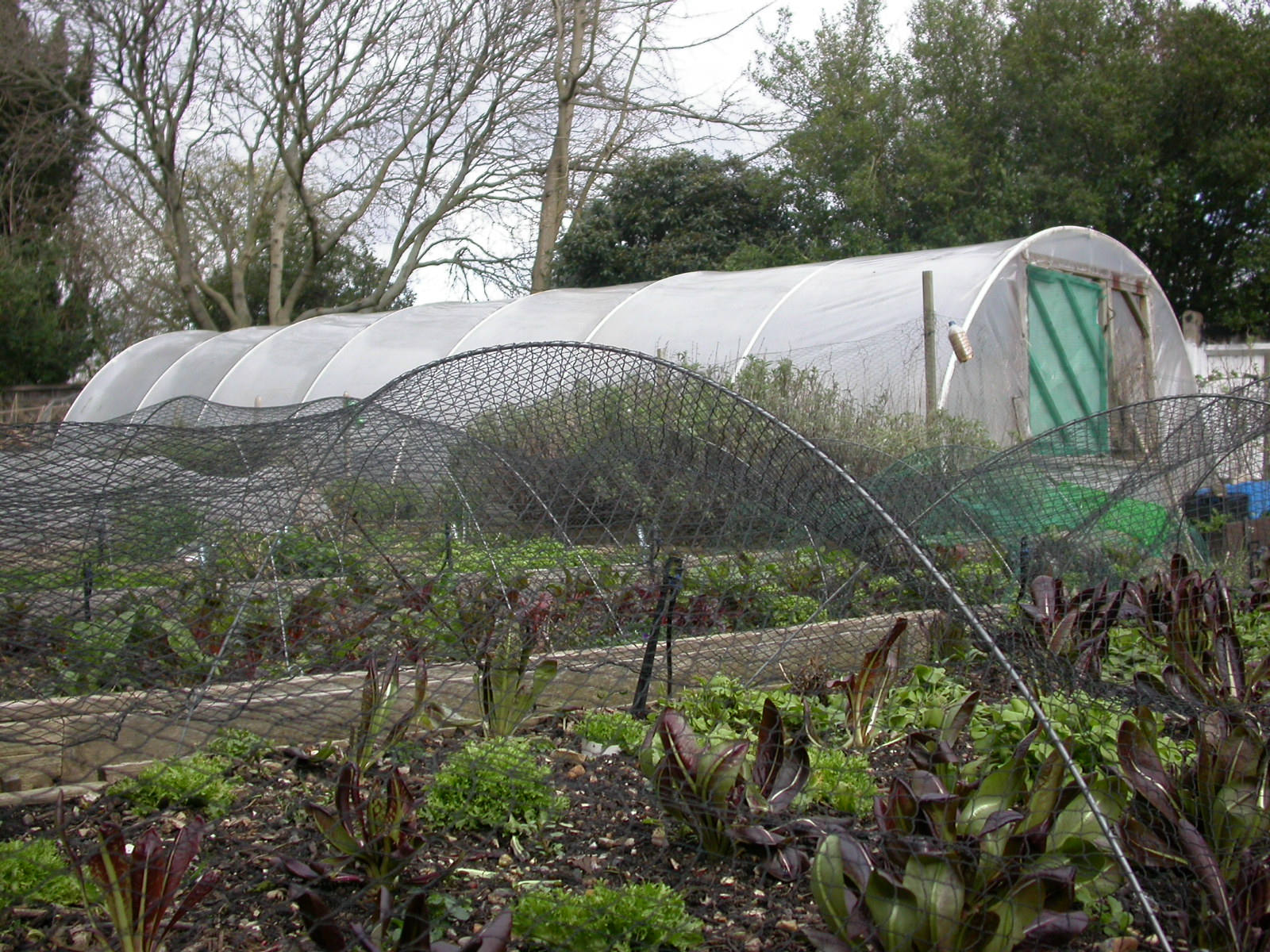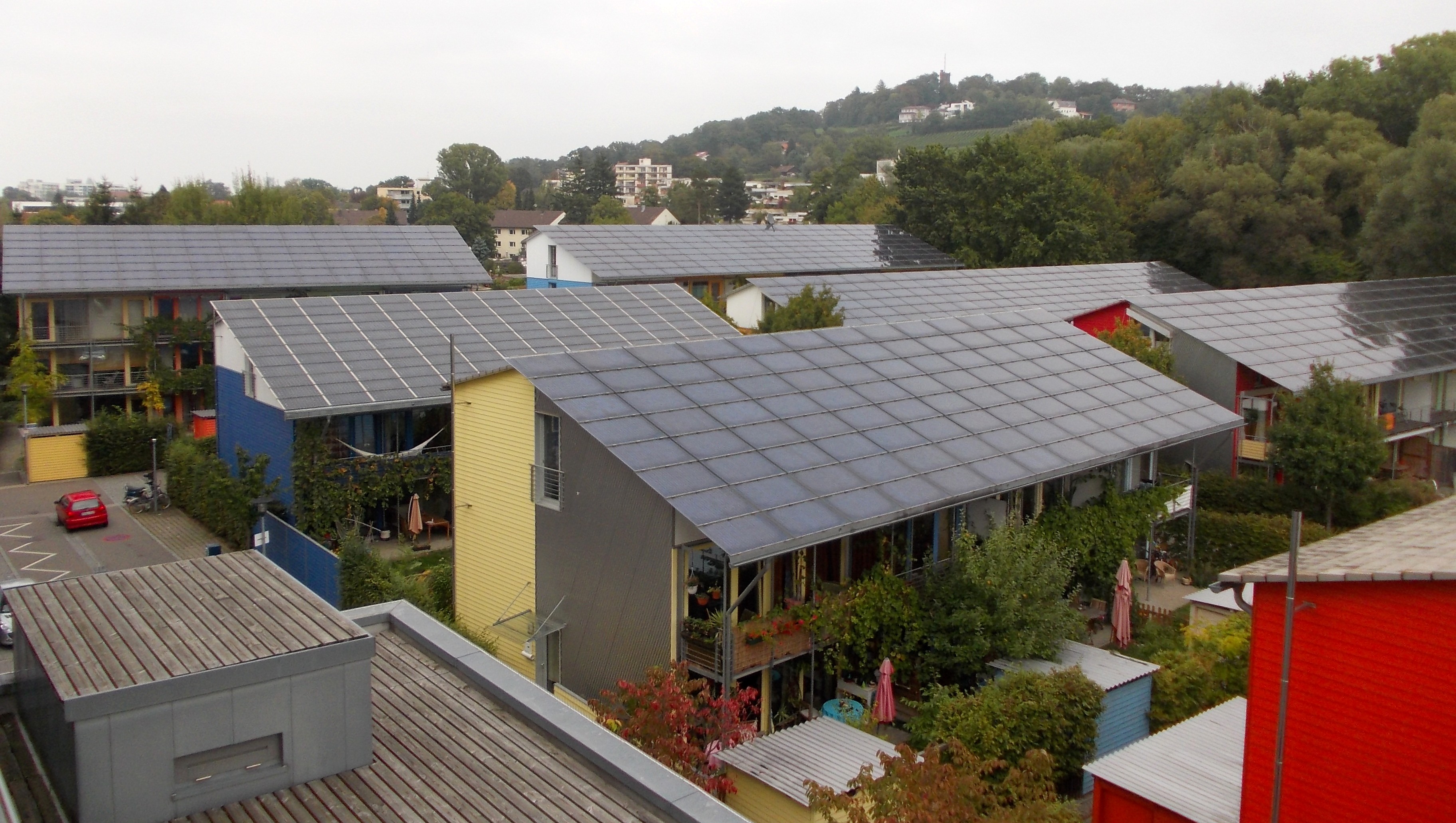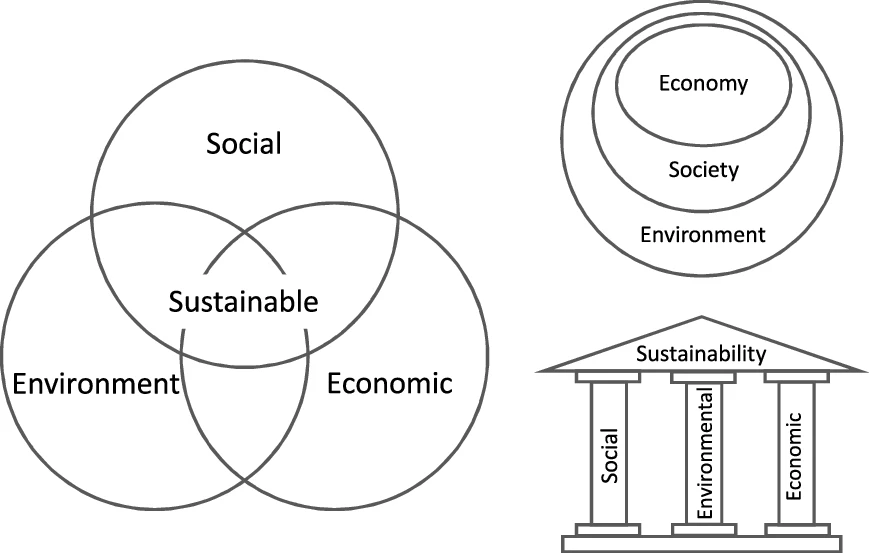|
Outline Of Sustainability
The following Outline (list), outline is provided as an overview of and topical guide to sustainability: Sustainability – capacity to endure. For humans, sustainability is the long-term maintenance of well being, which has environmental, economic, and social dimensions, and encompasses the concept of stewardship and responsible resource management. Essence of sustainability * Environmentalism * Environmental ethics * Planetary boundaries * Sustainable development * Sustainability science * Sustainability accounting * Sustainability governance * Sustainability education Taxonomy Sustainability is divided into two main branches: sustainability science and sustainability governance. Each of these branches is divided into a number of subfields: Sub-fields of sustainability science * Environmental impact assessment * Environmental psychology * Environmental philosophy * Environmental law * Sustainability measurement Sub-fields of sustainability governance * Eco ... [...More Info...] [...Related Items...] OR: [Wikipedia] [Google] [Baidu] |
Sustainability Science
Sustainability science first emerged in the 1980s and has become a new academic discipline. Similar to agricultural science or health science, it is an applied science defined by the practical problems it addresses. Sustainability science focuses on issues relating to sustainability and sustainable development as core parts of its subject matter. It is "defined by the problems it addresses rather than by the disciplines it employs" and "serves the need for advancing both knowledge and action by creating a dynamic bridge between the two". Sustainability science draws upon the related but not identical concepts of sustainable development and environmental science. Sustainability science provides a critical framework for sustainability while sustainability measurement provides the evidence-based quantitative data needed to guide sustainability governance. History Sustainability science began to emerge in the 1980s with a number of foundational publications, including the ''World ... [...More Info...] [...Related Items...] OR: [Wikipedia] [Google] [Baidu] |
New Classical Architecture
New Classical architecture, also known as New Classicism or Contemporary Classical architecture, is a Contemporary architecture, contemporary movement that builds upon the principles of Classical architecture. It is sometimes considered the modern continuation of Neoclassical architecture, even though other styles might be cited as well, such as Gothic architecture, Gothic, Baroque architecture, Baroque, Renaissance architecture, Renaissance or even non-Western culture, Western styles – often referenced and recreated from a Postmodern architecture, postmodern perspective rather than as strict Revivalism (architecture), revivals. The design and construction of buildings in evolving classical styles continued throughout the 20th and 21st centuries, even as Modern architecture, modernist and other non-classical theories broke with the classical language of architecture. The New Classical movement is also tied to a resurgence in new traditional architecture, which emphasizes crafts ... [...More Info...] [...Related Items...] OR: [Wikipedia] [Google] [Baidu] |
Sustainable Architecture
Sustainable architecture is architecture that seeks to minimize the negative environmental impact of buildings through improved efficiency and moderation in the use of materials, energy, development space and the ecosystem at large. Sometimes, sustainable architecture will also focus on the social aspect of sustainability as well. Sustainable architecture uses a conscious approach to energy and ecological conservation in the design of the built environment. The idea of sustainability, or ecological design, is to ensure that use of currently available resources does not end up having detrimental effects to a future society's well-being or making it impossible to obtain resources for other applications in the long run. Background Shift from narrow to broader approach The term "sustainability" in relation to architecture has so far been mostly considered through the lens of building technology and its transformations. Going beyond the technical sphere of "green design", inventi ... [...More Info...] [...Related Items...] OR: [Wikipedia] [Google] [Baidu] |
Sustainable Advertising
Sustainable advertising addresses the carbon footprint and other negative environmental and social impacts associated with the production and distribution of advertising materials. A growing number of companies are making a commitment to the reduction of their environmental impact associated with advertising production and distribution. Advertising's environmental impact Print advertising impacts the environment due to the carbon dioxide emitted into the atmosphere as a result of the production and distribution of print media. Factors include the sourcing and production of paper, petroleum-based ink, solvents, plastics and adhesives used and the fossil fuels burned in the manufacturing and distribution of newspapers and magazines. Digital media has impacts due to the greenhouse gas emissions associated with the manufacturing and operation of servers and datacenter devices, networking devices and client computers as well as the e-waste impacts of these devices at the end of their usef ... [...More Info...] [...Related Items...] OR: [Wikipedia] [Google] [Baidu] |
Sustainable Art
Sustainability is a social goal for people to co-exist on Earth over a long period of time. Definitions of this term are disputed and have varied with literature, context, and time. Sustainability usually has three dimensions (or pillars): environmental, economic, and social. Many definitions emphasize the environmental dimension. This can include addressing key environmental problems, including climate change and biodiversity loss. The idea of sustainability can guide decisions at the global, national, organizational, and individual levels. A related concept is that of sustainable development, and the terms are often used to mean the same thing. UNESCO distinguishes the two like this: "''Sustainability'' is often thought of as a long-term goal (i.e. a more sustainable world), while ''sustainable development'' refers to the many processes and pathways to achieve it." Details around the economic dimension of sustainability are controversial. Scholars have discussed this under ... [...More Info...] [...Related Items...] OR: [Wikipedia] [Google] [Baidu] |
Steady-state Economy
A steady-state economy is an economy made up of a constant stock of physical wealth (capital) and a constant population size. In effect, such an economy does not grow in the course of time. The term usually refers to the economy, national economy of a particular country, but it is also applicable to the economic system of a city, a region, or the world economy, entire world. Early in the history of economic thought, classical economist Adam Smith of the 18th century developed the concept of a ''stationary state'' of an economy: Smith believed that any national economy in the world would sooner or later settle in a final state of wikt:stationarity, stationarity. Since the 1970s, the concept of a steady-state economy has been associated mainly with the work of leading ecological economist Herman Daly. As Daly's concept of a ''steady-state'' includes the ecological analysis of natural resource flows through the economy, his concept differs from the original classical concept of a ... [...More Info...] [...Related Items...] OR: [Wikipedia] [Google] [Baidu] |
Circular Economy
A circular economy (also referred to as circularity or CE) is a model of resource Production (economics), production and Resource consumption, consumption in any economy that involves sharing, leasing, Reuse, reusing, repairing, refurbishing, and recycling existing materials and products for as long as possible. The concept aims to tackle global challenges such as climate change, biodiversity loss, waste, and pollution by emphasizing the design-based implementation of the three base principles of the model. The main three principles required for the transformation to a circular economy are: designing out waste and pollution, keeping products and materials in use, and regenerating natural systems. CE is defined in contradistinction to the traditional linear economy. The idea and concepts of a circular economy have been studied extensively in academia, business, and government over the past ten years. It has been gaining popularity because it can help to minimize Greenhouse gas emis ... [...More Info...] [...Related Items...] OR: [Wikipedia] [Google] [Baidu] |
Molding Packaging From Straw, K9837-1
Moulding or molding may refer to: * Molding (decorative) or coving, a decorative feature along walls and ceilings, formed from marble, plaster, wood, stone etc. * Molding (process), in manufacturing * Automotive molding * Mold (cooking implement) A mould (British English) or mold (American English), is a container used in various techniques of food preparation to shape the finished Dish (food), dish. The term may also refer to a finished dish made in said container (e.g. a jello mold). Typ ... See also * Mold (other) {{disambiguation ... [...More Info...] [...Related Items...] OR: [Wikipedia] [Google] [Baidu] |
Sustainability Measurement
Sustainability measurement is a set of frameworks or indicators used to measure how sustainable something is. This includes processes, products, services and businesses. Sustainability is difficult to quantify and it may even be impossible to measure as there is no fixed definition. To measure sustainability, frameworks and indicators consider environmental, social and economic domains. The metrics vary by use case and are still evolving. They include indicators, benchmarks and audits. They include sustainability standards and certification systems like Fairtrade and Organic. They also involve indices and accounting. They can include assessment, appraisal and other reporting systems. The metrics are used over a wide range of spatial and temporal scales.Bell, Simon and Morse, Stephen 2008. Sustainability Indicators Measuring the Immeasurable?'' 2nd edn. London: Earthscan. . For organizations, sustainability measures include corporate sustainability reporting and Triple Bottom ... [...More Info...] [...Related Items...] OR: [Wikipedia] [Google] [Baidu] |
Environmental Law
Environmental laws are laws that protect the environment. The term "environmental law" encompasses treaties, statutes, regulations, conventions, and policies designed to protect the natural environment and manage the impact of human activities on ecosystems and natural resources, such as forests, minerals, or fisheries. It addresses issues such as pollution control, resource conservation, biodiversity protection, climate change mitigation, and sustainable development. As part of both national and international legal frameworks, environmental law seeks to balance environmental preservation with economic and social needs, often through regulatory mechanisms, enforcement measures, and incentives for compliance. The field emerged prominently in the mid-20th century as industrialization and environmental degradation spurred global awareness, culminating in landmark agreements like the 1972 Stockholm Conference and the 1992 Rio Declaration. Key principles include the precaut ... [...More Info...] [...Related Items...] OR: [Wikipedia] [Google] [Baidu] |
Environmental Philosophy
Environment most often refers to: __NOTOC__ * Natural environment, referring respectively to all living and non-living things occurring naturally and the physical and biological factors along with their chemical interactions that affect an organism or a group of organisms Other physical and cultural environments *Ecology, the branch of ethology that deals with the relations of organisms to one another and to their physical surroundings * Environment (systems), the surroundings of a physical system that may interact with the system by exchanging mass, energy, or other properties. *Built environment, constructed surroundings that provide the settings for human activity, ranging from the large-scale civic surroundings to the personal places *Social environment, the culture that an individual lives in, and the people and institutions with whom they interact * Market environment, business term Arts, entertainment and publishing * ''Environment'' (magazine), a peer-reviewed, popular ... [...More Info...] [...Related Items...] OR: [Wikipedia] [Google] [Baidu] |







